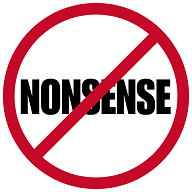 Each year for as long as I can remember pundits, experts, and talking heads are offering their projections (guesses) about the new year and what to expect from the market. There are a few ‘techniques’ that seem to be used each year such as the January Barometer, the Super Bowl Indicators, etc. Let’s review what they are then I’ll try to shoot them in the head to put them out of your misery.
Each year for as long as I can remember pundits, experts, and talking heads are offering their projections (guesses) about the new year and what to expect from the market. There are a few ‘techniques’ that seem to be used each year such as the January Barometer, the Super Bowl Indicators, etc. Let’s review what they are then I’ll try to shoot them in the head to put them out of your misery.
January Barometer
The January barometer is based on the view held by many in the stock market that the performance of the S&P 500 index between the first and 31st of January reliably forecasts the stock market's performance for the year. That is, if the S&P 500 index is higher at the end of January than it was at the beginning, then stock prices will be higher at the end of the year than they were at the beginning of the year. Likewise, a decline in the S&P 500 in January forecasts a decline in stock prices over the year.
For that concept to even appear in a blog about technical analysis is nonsense. My answer to the January Barometer is the same as my answer to the Sell in May and Go Away. Pure statistics! You cannot make reliable investment decisions based upon statistics. Well actually, you can; you just won’t be doing so for long. Here’s the problem with these statistically based concepts: Everyone seems to forget that if it is right 70% of the time, there are years that contribute to the 30% of the time it is wrong. And there may be many of those ‘wrong’ years in a row. Do not pay any attention to this nonsense.
At one point, someone offered the view that the first 5 days of January revealed how the month would play out. Again, probably based upon statistics. Statistics are, however, a great way to help understand how the markets have acted in the past; you just can't make trading decisions from them.
Super Bowl Indicator
The Super Bowl Indicator goes back to when there were separate football leagues, but now it boils down to this: If a National Football Conference team wins the Super Bowl, then the Dow Jones Industrial Average will rise for the year. If an American Football Conference team wins, then the index will fall.
Sorry, I cannot bring myself to even comment on this one.
Sell in May and Go Away
Let’s say you tested the “Sell in May” concept by first choosing exactly when to sell and exactly when to buy again in November and the results over the last 60 years shows it worked 75% of the time. I’m not even going to address the issue of how to determine “it worked” but only that it was profitable on an absolute basis. Now, armed with that statistic, would you actually sell in May and buy again next November? I seriously doubt it. It just might be the beginning of a period of time that contributes to the 25% of the time it doesn’t work – maybe for the next 4-5 years. Would you stick with it? Of course not, investing decisions based solely upon statistical evidence are unsound. For a more detailed and withering comment on these things see Technical Analysis Magic and Technical Analysis Magic II.
I’m sure there are other nonsensical items but this is enough to get the message across. You must make yourself ignore this crap; it will not help you in any way, shape, or form. It just sounds so darn believable though! Ignore it. And finally, no indicator (even a good technical analysis indicator) is right all the time; fortunately, you don’t have to be right all the time. You just need to ensure that you do not hold onto losers and keep your emotions out of the game. Choose some good reliable indicators and stick with them. Learn how they respond during different market environments and master the interpretation of them. And remember, when your favorite indicator fails you, avoid thinking that this time is different, it probably is not.
Dance with the Trend,
Greg Morris
